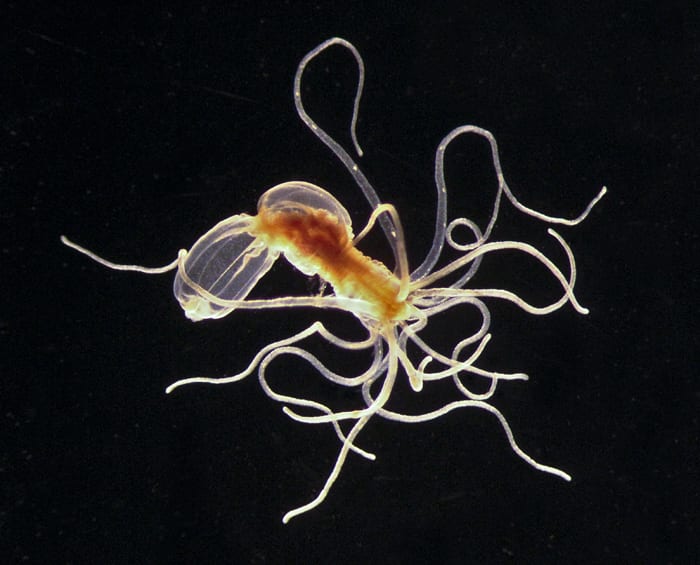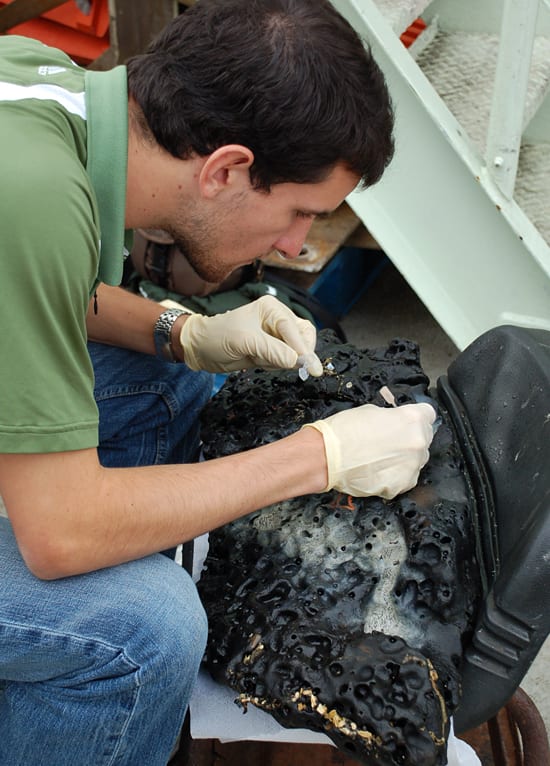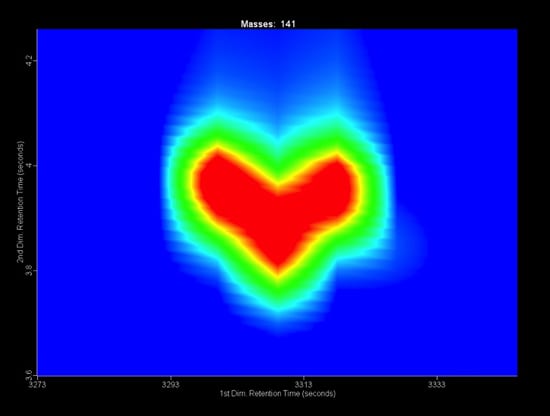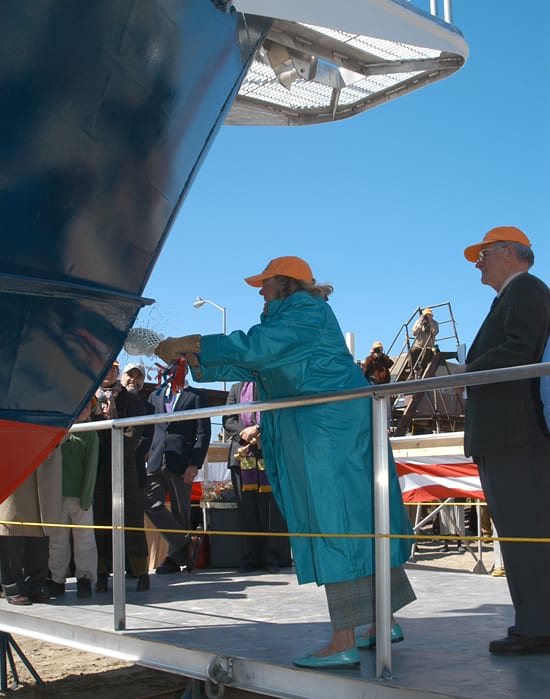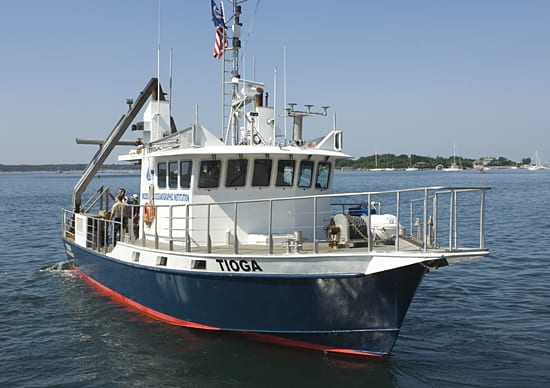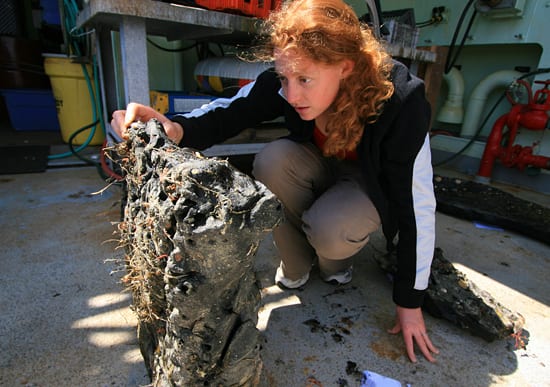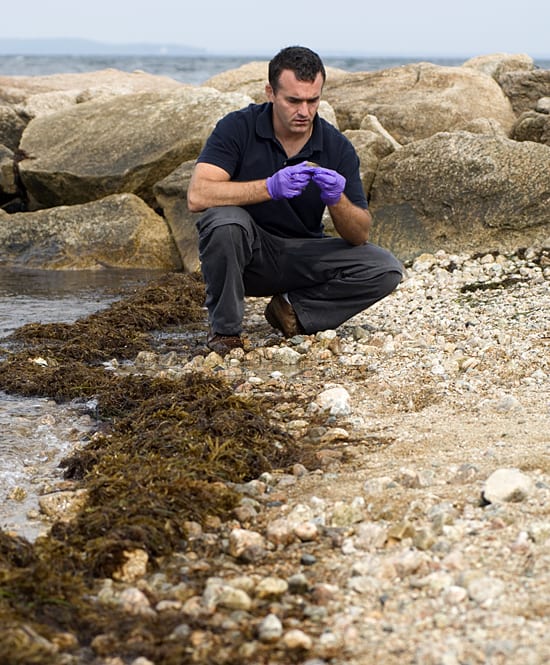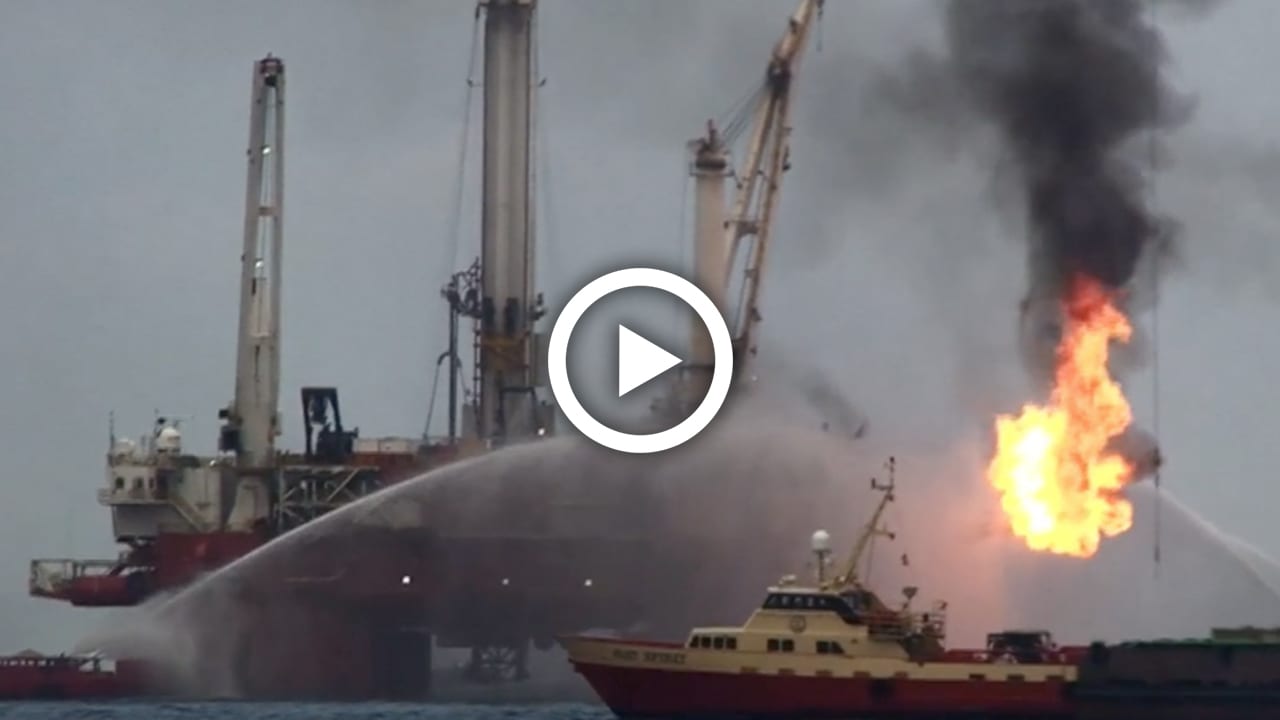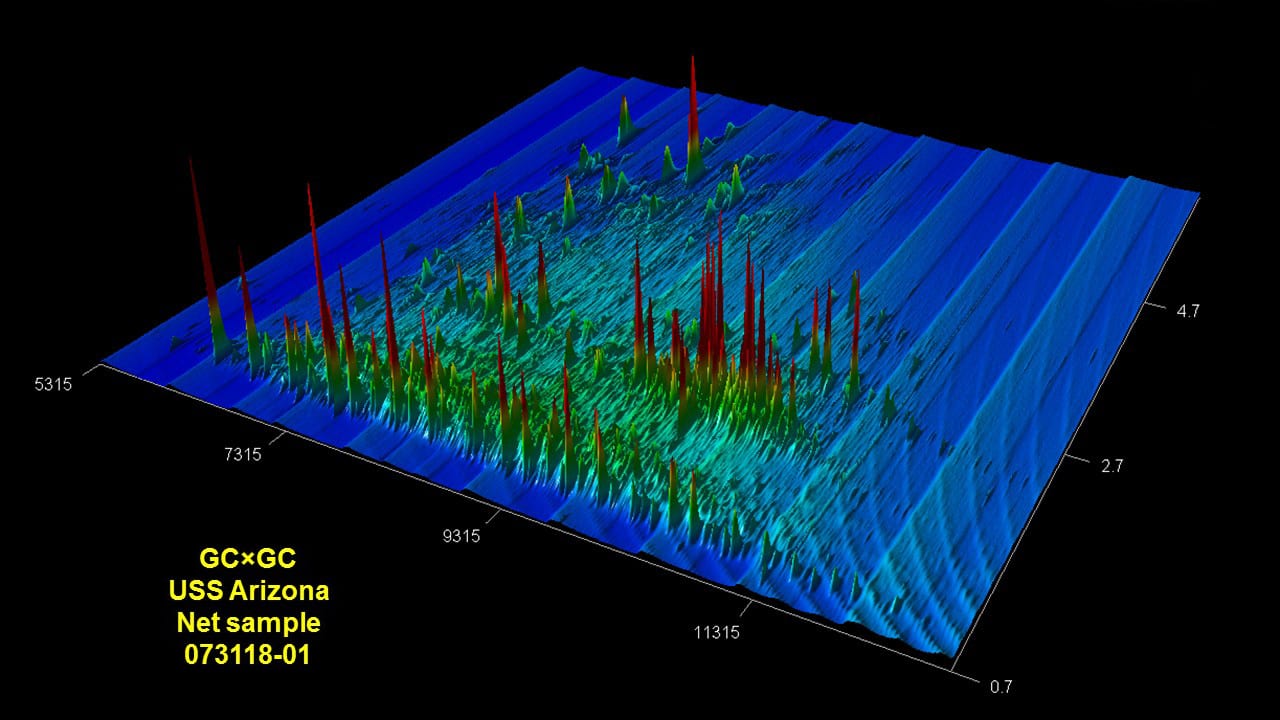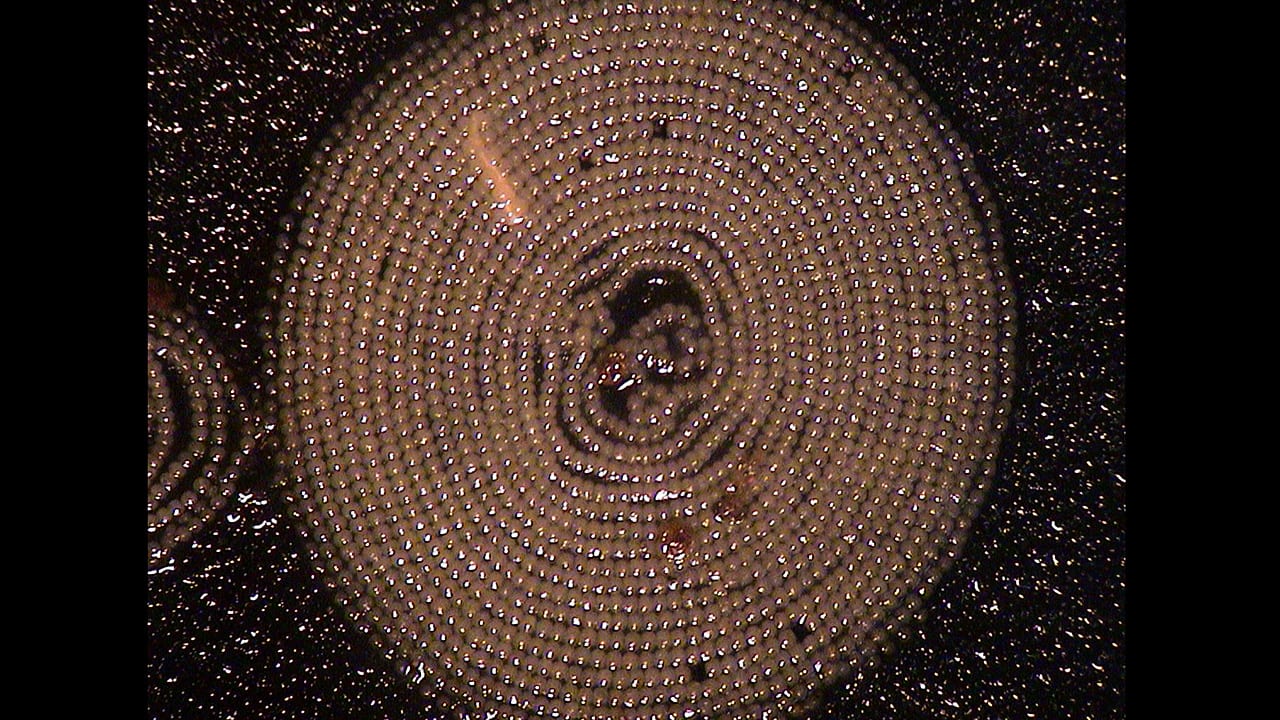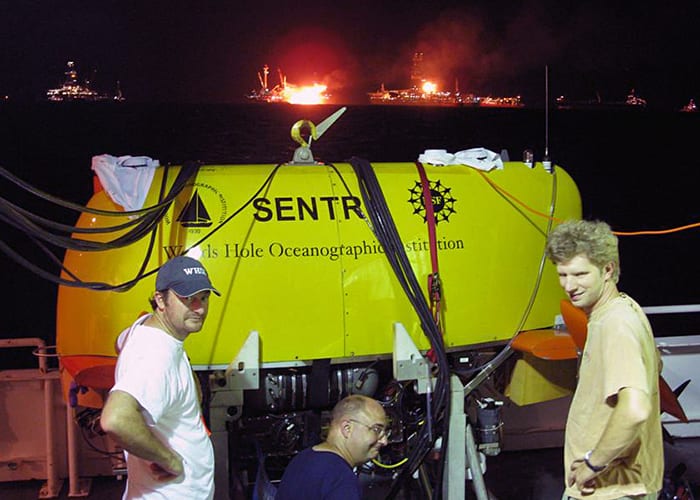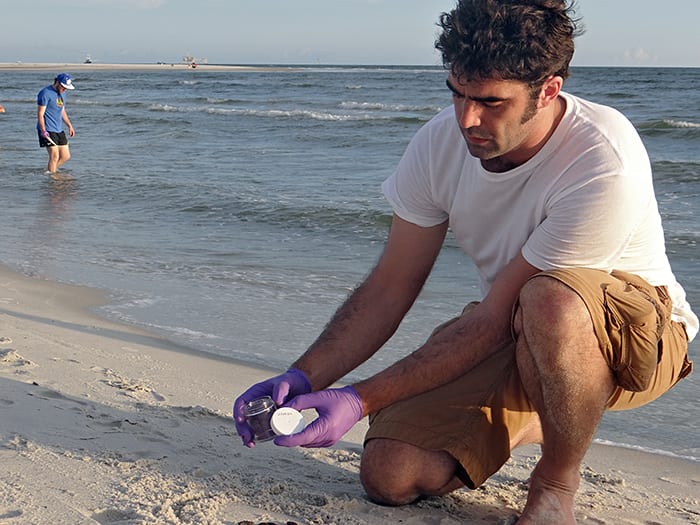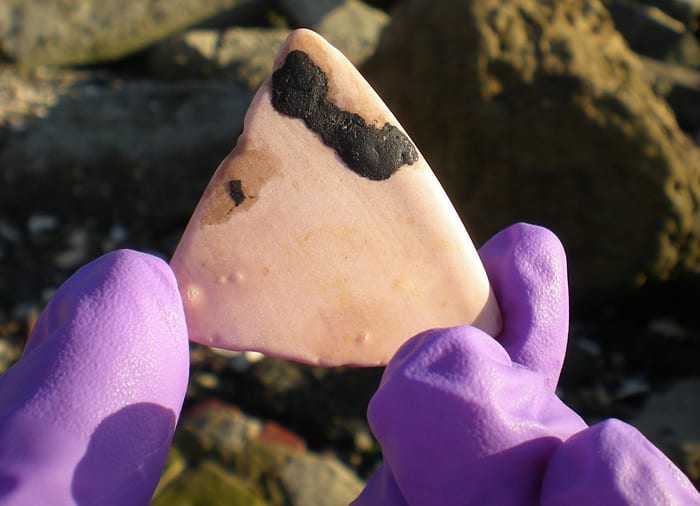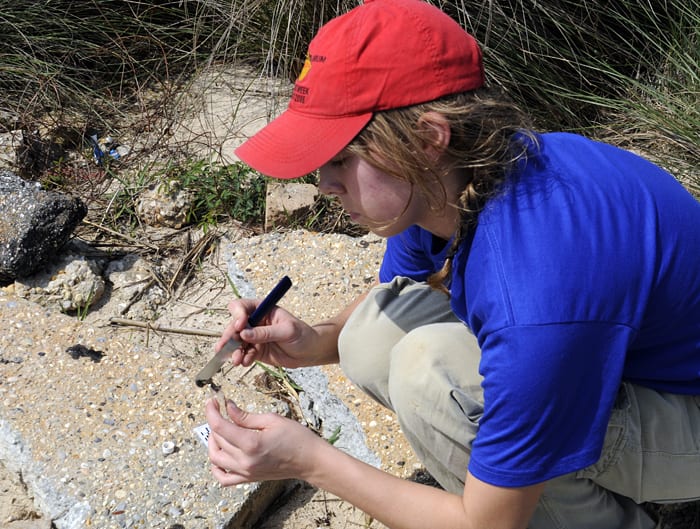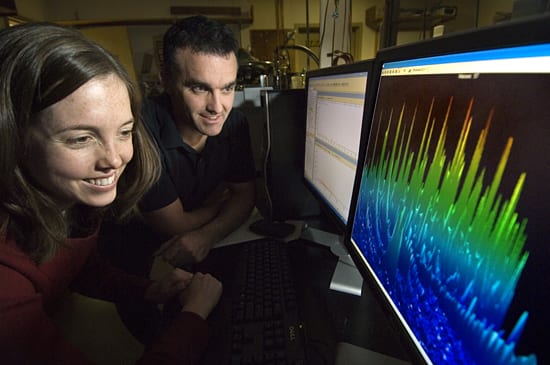Multimedia Items
Starlet Stressors
The starlet sea anemone, a small animal found in salt marshes on Cape Cod, is a close relative of reef-building corals. Like other animals, corals and sea anemones can be…
Read MoreGood day at black rock
Blair Paul, a graduate student at the University of California, Santa Barbara, gently scrapes biological specimens from a chunk of asphalt that had been at the bottom of the Santa…
Read MoreWill you be my Naphthalene?
This image of a single molecule of crude oil from the Gulf of Mexico appears to have an intrinsic sense of romance on Valentine’s Day. WHOI scientists Bob Nelson and…
Read MoreToasting a new ship
Donor Hope Smith christens the R/V Tioga on March 29, 2004, as then-WHOI Director of Marine Operations Dick Pittenger looks on. The name Tioga comes from the Iroquois for “swift…
Read MoreThe little ship that could
Since its delivery to Woods Hole on April 16, 2004, the coastal research vessel Tioga, shown here approaching the WHOI dock, has been used to collect water samples during harmful…
Read MorePavement for the Seafloor
Heather Coleman, a graduate student from the University of California at Santa Barbara, examines a chunk of natural asphalt retrieved by the Alvin submersible from the Santa Barbara Channel. Natural…
Read MoreNo Stone Unturned
WHOI marine chemist Chris Reddy collects and examines oil-covered rocks at Nyes Neck in West Falmouth, Mass., following the April 2003 spill from the Bouchard 120 oil barge. Reddy and…
Read MoreDeepwater Horizon – major findings and technological advances
Ten years ago, a powerful explosion destroyed an oil rig in the Gulf of Mexico, killing 11 workers and injuring 17 others. Over a span of 87 days, the Deepwater Horizon well released an estimated 168 million gallons of oil and 45 million gallons of natural gas into the ocean, making it the largest accidental marine oil spill in history.
Read MoreThe Tale of the Arizona
This two-dimensional gas chromatogram created by WHOI technician Bob Nelson from samples collected by chemist Chris Reddy tells a very special story. In July 2018, Reddy traveled to Pearl Harbor…
Read MoreUnderwater Wonders
Researchers at WHOI spend their time trying to understand the ocean—the physics of its currents, the chemistry of its water and sediments, the geology of its seafloor, and the biology…
Read MoreDeepwater Horizon
Today marks the fifth anniversary of the Deepwater Horizon disaster, which killed 11 people and released about 75,000 gallons of oil per hour into the Gulf of Mexico for 87…
Read MoreStill There
In the summer of 2013, guest student Ferdinand Oberle collected samples of oil on a beach along the coast of the Gulf of Mexico. Each year since the Deepwater Horizon…
Read MoreA Shard of Evidence
Karin Lemkau searches for oil—but not in the usual places. In 2007, a container ship, the M/V Cosco Busan, struck the San Francisco-Oakland Bay Bridge and spilled tens of thousands…
Read MoreA Day at the Beach
In April, Coastal Ocean Institute director Chris Reddy returned to the Gulf of Mexico with research assistant Catherine Carmichael (above). The pair visited several beaches around the Gulf to collect…
Read MorePeaks of Interest
MIT/WHOI graduate student Kristin Smith and marine chemist Chris Reddy examine data from a sample of oil that naturally seeped from the seafloor off the coast of Santa Barbara, California.…
Read More
